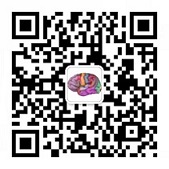Landau-Kleffner Syndrome
Also known as acquired epileptic aphasia
Etiologies: consider genetic correlation (some mutations of GRIN2A gene are found, and others may involve complex polygenic genetic patterns) [1].
Age of onset: onset between the ages of 2 and 8 years (peak 5 to 7 years).
Seizure characteristics: characterized by acute or subacute onset of acquired aphasia in a child with previous normal development and cognition (mainly verbal and auditory aphasia, i.e. unable to understand and express oral language). Seizures can be seen in about 3/4 of children, and there can be many types of seizures, but generalized tonic seizure should be excluded [2-3].
EEG: Background: it can be normal, focal or diffuse slowing. Interictal: about 80% of patients have continuous spike-and-wave in slow sleep (usually in the middle and posterior temporal region, but can also in other parts). Ictal: depending on different seizure types [2-3].
Brain MRI: Most of them are normal.
Developmental progress: It is mainly language impairment typically fluctuates, and some can be basically recovered after remission, and some will residual language impairment (especially if onset is earlier).
Reference
- Lesca, G., et al., GRIN2A mutations in acquired epileptic aphasia and related childhood focal epilepsies and encephalopathies with speech and language dysfunction.Nat Genet, 2013. 45(9): p. 1061-6.
- Panayiotopoulos. 癫痫综合征及临床治疗. 北京 : 人民卫生出版社, 2012.
- 刘晓燕. 临床脑电图学. 第2版. 北京 : 人民卫生出版社, 2017.

 English
English  简体中文
简体中文 